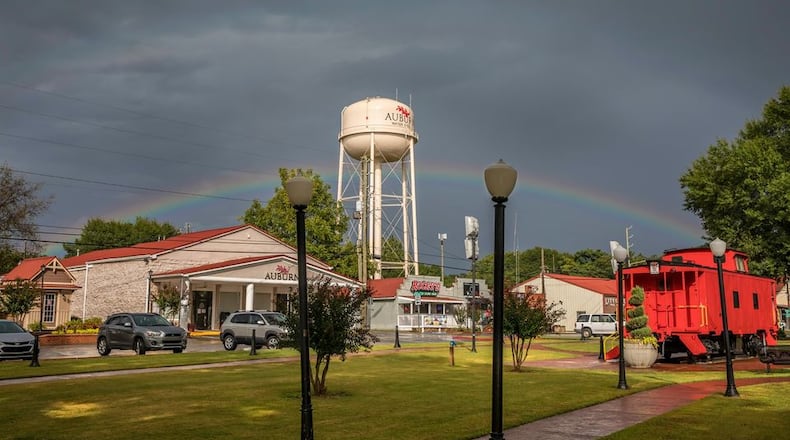Auburn officials gave the go-ahead Thursday for a 386-home subdivision on Hills Shop Road, despite earlier resistance from some residents.
Inline Communities plans to build 253 townhomes, 133 single-family homes and a few commercial lots on about 74 acres near railroad tracks. The subdivision will be called Auburn Station at Hills Shop Road, which will be built over the next several years.
The subdivision is one of two projects in the works that will bring about 1,000 new homes to the town of 8,000 residents located on the edge of Barrow and Gwinnett counties.
The approval for Auburn Station at Hills Shop Road comes as Auburn begins constructing a walkable downtown area with a new city hall building, town green and commercial businesses.
Mayor Linda Blechinger said that Auburn is primed for rapid, inevitable growth. Homes already under construction in the city have a waiting list of homebuyers, Blechinger said.
Earlier this month, City Council had tabled the annexation and rezoning requests needed to build the subdivision. Another developer, Chafin Land Development, has filed separate requests for a 529-home subdivision known as Fowler Farms on Apalachee Church Road. City officials tabled that request until July.
About 10 residents spoke in opposition to both large subdivisions at an earlier meeting, concerned the homes would overburden the school system, increase traffic and degrade Auburn’s small-town charm.
Population is expected to more than double in both Barrow and Gwinnett counties by 2050, according to the Atlanta Regional Commission.
The annexation of the 74 acres where Auburn Station at Hills Shop Road will be built allows Auburn officials and residents to have a say in what happens, Blechinger said, as she expected Barrow County to develop the land if Auburn didn’t take it over.
“If the county approved (a development), it would be at a higher density and we’d have apartments over there,” Blechinger said. “By us doing it, at least we know what’s going to come in.”
Councilmember Peggy Langley, whose family has resided in Auburn for generations, stressed that officials put conditions in place to address some of the residents’ concerns.
“I’d have whole lot rather for people to be moving in and purchasing the townhomes than I had for them to turn them into apartments and be rentals,” Langley said. “You never know what you’re going to get when you get a renter, so this way they’re investing in what they’re buying.”
Charles Sewell, a former city councilmember, was the lone resident who spoke in opposition to the plan on Thursday.
Sewell worried it’d be illegal for officials to annex the land without also taking in other nearby properties to forego the creation of an “island” with unincorporated areas splitting the new city limits. City Attorney Jack Wilson said the annexation wouldn’t violate state law.
Sewell said there’s already a gap in police presence in his neighborhood, and he’s concerned officers won’t be able to keep up with patrolling the new area. Blechinger said the city could use the new taxes collected from the subdivision to put toward public safety and hiring more officers.
In the Auburn Station at Hills Shop Road subdivision, townhomes will start in the high $200,000 range and the single-family homes will start in the mid to high $300,000 range, said Bryan Musolf, a representative for Inline Communities.
The townhomes will be at least 1,450 square feet for single-car units and 1,750 square feet for double-car units, while the single-family homes will be at least 1,800 square feet.
“Auburn is a very special place that’s got a lot of great attributes, both with the downtown and the growing infrastructure that’s taking place out here,” Musolf said. “I understand (residents’) concerns, but, I would say, a bigger issue right now is the chronic shortage of housing in this area and across the whole Metro area.”
About the Author
Keep Reading
The Latest
Featured




